The Future of Money - Digital Cash?
The Reserve Bank of New Zealand recently published some issues papers exploring the future of money in Aotearoa New Zealand. This included the potential for a new digital currency. CNA met with the Reserve Bank on behalf of the community sector, to discuss our interests and concerns regarding this issue.
Cryptocurrency, the decline of cash, the COVID-19 pandemic, increased online purchasing - these trends and more are changing the way all of us, our communities and organisations use money. It is unsurprising then, that almost 80% of countries are exploring, developing or experimenting with the idea of a Central Bank Digital Currency (CBDC). It sounds complex, and it is, but essentially a CBDC is a form of Digital Cash.
The Reserve Bank of New Zealand | Te Pūtea Matua, has recently released a series of issues papers that explore the future role of Central Bank money, which includes exploring whether a CBDC would be appropriate here in Aotearoa New Zealand, and what it might look like. You can find links to those issues papers here. The Reserve Bank wants feedback on these issues papers before 10am, Monday 6 December 2021, and we encourage all our members to read on and submit their responses where appropriate.
After reading these, the team at CNA were interested, a little confused and had a lot of questions. So we organised a meeting with Peter Northcote and Bronwyn Kenna from the Reserve Bank who are working on the Future of Money – Te Moni Anamata. Peter and Bronwyn were keen to hear feedback and questions from the community sector, so we recorded what they told us as a way to introduce and simplify this issue for our kaimahi in community organisations around NZ.
Central Bank Money vs Private Money
The main thing to understand before discussing what the future of money might look like, is that there are two different types of money in our country. That is: central bank money and private money. Central bank money is cash, distributed by our central bank (the Reserve Bank) and backed by the Government. Private Money is the money in our bank accounts, which is backed by private entities - banks. At the moment, physical cash is the only form of central bank money, but a CBDC would introduce a new form of central bank money which would be digital. Unsurprisingly, private money is currently much more common than central bank money, because most people use their bank accounts and bank cards a lot more than they use cash. However, around 6% of New Zealanders use cash for every single one of their transactions - that's around 305,040 people.
The Reserve Bank is exploring a CBDC for a multitude of reasons, including the decrease in cash use. Central bank money is meant to act as a 'value anchor' for private money; because it is backed by the Government, it is the most reliable, stable and safe form of money. It is also meant to be a tool of social and financial inclusion, because it can be used by anyone and everyone. However, it can't do these things if it is irrelevant or not widely used.
Financial innovation like cryptocurrencies and other forms of digital money have also motivated the Reserve Bank to look at how they can keep up with these trends.
The current situation implicates a lot of issues that CNA, alongside other community organisations, is already concerned about. The principal two being the Digital Divide and Banking issues. As more and more financial services, agencies and payment methods move online, those without internet access or bank accounts are left behind, and services can become inaccessible for many communities. Evidently, the future of money provides both solutions and complications to these issues, which we hope the community sector will be able to speak to in their responses to these issues papers.
What a CBDC Would Look Like:
As an electronic/digital form of cash, CBDC would work just like cash - as a means to save and pay. It would need a payment instrument - likely a card or a phone app - but it would not require a bank account. This is a key difference - as it allows CBDC to be accessible to people who don't want to or can't open a bank account, and it removes the associated costs of doing so.
So, people would have cards with digital cash loaded onto them - they could choose to deposit actual cash onto their card, get paid onto their card or transfer money from a private bank account to their card. In practice, it would work like a bus card, but with lower risk as the money is backed by the Government.
Other than keeping central bank money relevant and potentially fostering social and financial inclusion, the Reserve Bank also believes a CBDC could:
- act as an additional monetary policy tool, for example, by providing monetary stimulus or paying interest
- support financial inclusion, wellbeing and the provision of government services, such as by partnering with government programmes. This could look like providing benefits and calculating tax through the use of CBDC.
- involve New Zealand in global initiatives that use CBDCs in cross-border payments
- Would the introduction of a CBDC, intentionally or unintentionally, phase out cash?
Reserve Bank (RB) response: The RB will ensure cash is available for as long as people need it. - We had a number of privacy concerns around this - although CBDC would be pseudonymous, with names and personal details not necessary for usage, it could still be tracked and traced. How could we stop it being used, for example, in criminal trials, or to control/criminalise those on the benefit for their spending, etc?
RB response: The balance between privacy and crime control (focusing especially on money laundering and tax avoidance) is something they are currently looking at. All information would still be subject to the Privacy Act and part of this process would be creating legislative mechanisms and information sharing arrangements that are very narrow and explicit. - We were concerned about how a CBDC and the data it provides could be misused by future governments.
RB response: The Act that governs the Reserve Bank gives it independence to achieve its own objectives and this protects it from political influence. Parliament would have to amend that Act to infringe upon this independence. - What would the integration with other Government agencies look like?
RB response: This discussion will occur further down the line, but the RB is aware that the agencies that NGOs work with need to be included and have been working with the Ministry of Social Development and Te Puni Kōkiri on this. - What about access to statistics about people's spending, saving etc., which could be useful data?
RB response: The RB has an obligation to share statistics with Government departments within the limits of the Privacy Act. The RB already currently collates and publishes data on their website; as a principle they share data as much as possible. - What is the link between a CBDC and cryptocurrency, or what is the difference?
RB response: CBDC is issued by the Reserve Bank and is an obligation/IOU backed by the Government, whereas cryptocurrency is a speculative investment. - How will the RB measure the success of this project?
RB response: The success of this project would be linked to the RB's objectives of stewardship - how inclusive and effective is the currency? Is it providing New Zealanders with a new way to pay and save? How trusted and resilient is it? - How would a CBDC affect banks?
RB response: If people used a CBDC then the RB could see the flow of funds from banks and could control this flow through incentives to keep money in banks. - Could this contribute to working out tax or tax avoidance of multi-national corporations?
RB response: This is something they're looking into, especially in relation to the review of the Anti-Money Laundering and Countering Financing of Terrorism Act. - Where would/is the RB getting regulatory and legal framework advice from?
RB response: They are currently using the GAP analysis tool (the comparison of actual performance with potential or desired performance) to look at how the statutory framework supports the aims of a CBDC. The results of this will be presented to the Minister of Finance early next year.
- View the Reserve Bank slides presented to us at our meeting (Note: the presentation is a summary of issues paper content designed to introduce and encourage engagement and response, and the issues papers are what people should read and rely upon before responding using the online feedback tool.)
- Email futureofmoney@rbnz.govt.nz to discuss engagement and presentation opportunities.
- The Future of Money: Stewardship issues paper
- The Future of Money: Central Bank Digital Currency issues paper
- Submit on a CBDC using the online response tool
Or download a copy of the feedback form







